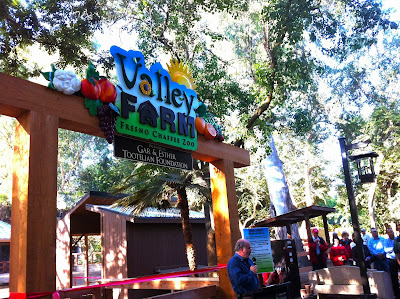CALIFORNIA RANGELAND TRUST IN FORWARD-LOOKING PARTNERSHIP WITH RETAILER
 |
| The entrance to the exhibit designed by Heather Davis, with Chaffee Zoo. |
 |
| The crowd listens to Scott Barton, Chaffee Zoo Director. |
 |
| Crops Growing at the Valley Farm Exhibit. |
“When you talk about agriculture being the economic engine, it’s important to know that every dollar generated on the farm typically generates $3.50 in the local economy,” said Jacobsen. “When you talk about Fresno County, which alone generates $6.6 billion, and then add in Kings, Tulare, Madera and Merced Counties, we are talking about an economic impact of more than $60 billion. Kids in the middle of the urban environment need to understand what we do and how we do it.”
 |
| CSUF President Joseph Castro |
| Bryan Van Groningan |
 |
| Out of business dairy #1 |
 |
| Out of business dairy #4 |
We need to close the gap, between what we receive for milk going into cheese making in California and what dairy farmers outside the state receive for the same type of milk,” said Marsh.
 |
| Bonnie Fernandez-Fenaroli |
 |
| Norm Groot |
• Growers are required to submit their Annual Compliance Form by October 1st, 2013, using the same version of the form from 2012’s reporting cycle. Additional reporting requirements are NOT added to this filing cycle.
 |
| Bob Ehn |